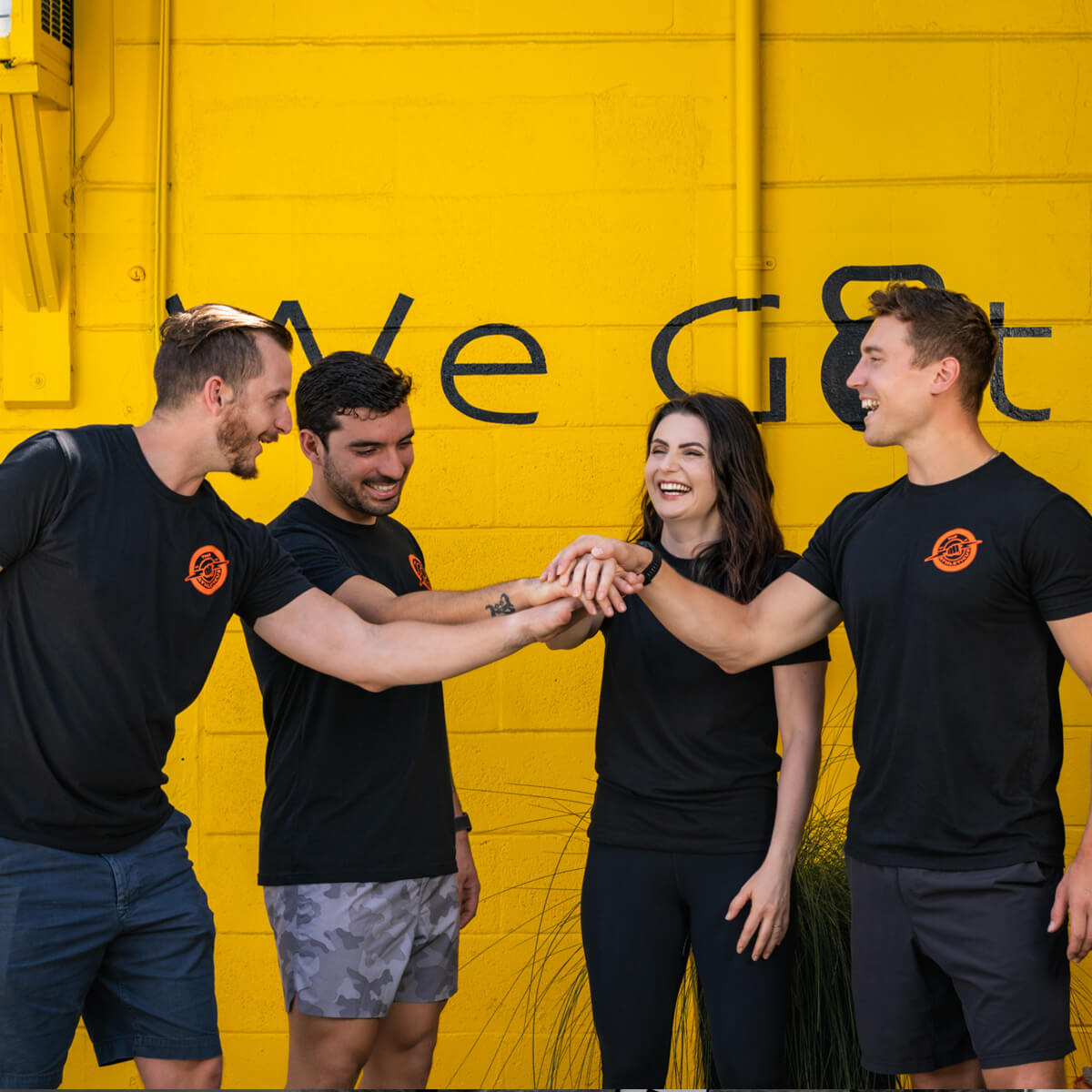Does Strength Training Affect Weight Loss?
The history of strength training has seen significant evolution over the past few decades. The 1960s and 70s were dominated by bodybuilding figures like Arnold Schwarzenegger and the creation of Gold’s Gym in 1965; which was the catalyst of strength training gyms. Here we also saw strength machines like the Nautilus start.
The 80s saw a shift towards aerobics and cardiovascular health, though strength training remained crucial for athletes and bodybuilders. In the 1990s, strength training regained mainstream attention due to the popularization of creatine supplements and workout programs that combined cardio with strength training.
The 2000s and 2010s marked a shift from machine-based strength training to functional and bodyweight exercises, with the rise of High-Intensity Interval Training (HIIT), CrossFit, and resistance band training. In the past 20 years strength training has continued to become more popular with men and women of all ages.
In today’s world, we see the 15-year-old male bench pressing right next to the 55-year-old woman doing a 200-pound deadlift. We’re understanding more the benefits of strength training for all walks of life, not just for bodybuilding.
When it comes to weight loss, nutrition is going to be the most important element to shedding the pounds. But you’ll still need to exercise to lose weight faster, keep healthy in the process and live a high quality of life in your body. In your exercise routine, you should absolutely bring in strength training for several reasons.
Strength training is a type of physical exercise that involves the use of resistance to encourage muscular contraction, which in turn builds and strengthens the muscles.
The Calorie Burn
To comprehend how strength training assists in weight loss, it’s important first to understand the process of calorie burning. When you exercise, your body burns calories for energy. The harder or more intense the exercise, the more calories you burn.
However, the calorie burn does not stop when the workout ends. After a strength training session, your body continues to burn calories during a phase called ‘Excess Post-Exercise Oxygen Consumption’ (EPOC), also known as the ‘afterburn effect.’ You’ll be burning extra calories hours after the workout, continuing to get the benefit from the workout.
Building Muscle Mass
Strength training is synonymous with muscle building. As you lift weights, you create microscopic damage in the muscle fibers. The body repairs this damage and, in the process, increases the size and strength of the muscles.
But what does this have to do with weight loss? Every tissue in your body requires a certain amount of energy (calories) to sustain itself. This energy is necessary to carry out the essential metabolic processes that keep you alive, like maintaining body temperature, repairing cells, and more. This is known as your basal metabolic rate (BMR), the amount of energy you’d burn if you were to do absolutely nothing but rest for 24 hours.
Not all tissues in your body, however, burn the same amount of calories. Fat, for example, is not very metabolically active. It doesn’t burn a lot of calories at rest. Muscle, on the other hand, is highly metabolically active. It requires more energy to maintain, even when it’s not being used. In other words, your body burns calories to maintain muscle mass, even when you’re just sitting on the couch or sleeping.
This becomes crucial in the context of weight loss because the more muscle mass you have, the higher your BMR. A higher BMR means that you burn more calories throughout the day, even when you’re not actively exercising. This can create a calorie deficit or a situation where you’re burning more calories than you’re consuming, which is necessary for weight loss.
Shaping The Body
When someone loses a lot of weight through diet alone they often get loose skin and can appear thin or still have a belly with skinnier limbs. This isn’t always the case but when this happens to someone who was once overweight they sometimes still aren’t happy with their body. Because now they feel they look unhealthy in the opposite direction.
So they then work on building up the body from that point. Instead of getting to that point, we can do strength training to build and shape the body throughout the weight loss journey.
That way, as you lose weight you’ll be building up your body’s strength and power in the meantime. As you shed down the pounds you’ll see your body form into a healthy shape.
Note, all weight loss journeys aren’t all about aesthetics. Some people might read this and say they don’t care what they look like at a lower weight and that’s okay. But it’s not all about aesthetics, there’s health and wellness in muscle.
Importance of Body Composition
One of the major benefits of strength training is that it promotes lean muscle mass while concurrently helping reduce body fat. This dual effect is critical because it leads to improved body composition, which is a key indicator of overall health.
When we say “body composition,” we’re referring to the proportion of fat, muscle, and bone in the body. An optimal body composition is one that includes a lower percentage of body fat and a higher percentage of lean muscle mass. Achieving a healthier body composition goes beyond just losing weight; it’s about shedding excess fat while preserving or building lean muscle.
Lean muscle mass is metabolically active, meaning it burns calories even at rest, thereby increasing your resting metabolic rate. This higher metabolic rate makes it easier to maintain a healthy weight, and by extension, a healthier body composition. Furthermore, muscle is denser and takes up less space than fat, meaning a person with more muscle mass may look slimmer than someone of the same weight but with a higher fat percentage.
The benefits of a healthy body composition extend beyond the physical appearance. Excessive body fat, particularly when distributed around the abdomen (visceral fat), is associated with an increased risk of various health conditions. These include heart disease, high blood pressure, type 2 diabetes, certain cancers, and metabolic syndrome, among others.
Moreover, maintaining a higher percentage of muscle mass as we age can help combat sarcopenia (age-related muscle loss), improving mobility, independence, and overall quality of life in older adults. It can also help to prevent osteoporosis, as the act of strength training places stress on the bones, encouraging them to maintain their density. If we can maintain overall strength and mobility for longer then we can exercise more, allowing for more weight loss to occur.
Other Notable Mentions
Strength training can increase the body’s sensitivity to insulin and improve the ability to manage blood glucose, which can be especially beneficial for people with type 2 diabetes.
Appetite Regulation: Some research suggests that strength training can help regulate appetite by altering levels of hunger-regulating hormones, such as ghrelin and peptide YY, leading to reduced calorie intake and promoting weight loss.
Better Balance and Stability: Strength training exercises, particularly those that engage the core muscles, can enhance your balance and stability. This becomes increasingly critical as we age because it can prevent falls and related injuries.
Conclusion
While traditional forms of cardio, such as running and cycling, have their place in a weight loss regimen, don’t underestimate the power of the barbell. Strength training can increase your metabolism, build lean muscle mass, and help you burn calories more efficiently, all of which contribute to weight loss. Coupled with a balanced diet and a healthy lifestyle, strength training could be your secret weapon in your weight loss journey.
As always, consult with a healthcare provider before starting any new exercise program. And once you’ve got the all-clear, pick up those weights and start your strength training journey towards better health and a slimmer physique.




